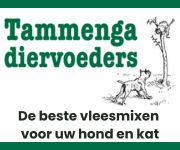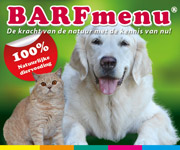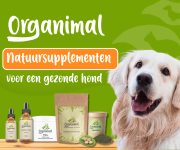Werd er "vroeger" door Dr. Jean Dodds altijd geroepen dat vers/rauw etende honden afwijkende uitslagen hebben bij bloedonderzoek bij BUN en CREA, is ze er nu een soort van achter gekomen dat dit niet het geval is, dat de rauw/vers etende honden ook binnen de standaards vallen. De honden die buiten de standaard vielen, vielen na een her-test weer binnen te standaard en twee van de onderzochte honden mankeerde ook wat, bleek.
Hier het artikel van Dr. J. Dodds:
For almost two decades, the veterinary community has debated the effects of raw diets on laboratory blood and urine results. Unfortunately, the debate has not been definitively resolved and is now sending confusing mixed messages to companion animal parents. I want to give my conclusive opinion, based upon published results and personal experience.
Blood is my thing.
I am by training a veterinary hematologist and immunologist. After graduation from veterinary school, I was a Research Scientist with the New York State Health Department and began comparative studies of animals with inherited and acquired bleeding diseases. Eventually, my position culminated as Chief, Laboratory of Hematology, Wadsworth Center. In 1980, I also became Executive Director, New York State Council on Human Blood and Transfusion Services before moving to Southern California to start Hemopet, a non-profit, closed colony blood bank for dogs, greyhound rescue and veterinary specialty diagnostic program.
So, when you hear me go on about antibodies (produced in the blood) and the NutriScan test, adverse reactions to vaccines such as IMHA (anemia), or the importance of thyroid reference ranges (measured through blood), you can rest assure it is backed with my over 50 years of clinical research.
Bloodwork Analysis
The beauty of initial bloodwork results (known as CBC and Chemistries) is that it reveals and detects the potential presence of many conditions including the effects of vitamin and mineral deficiencies or excesses, or diseases such as infections, diabetes, bowel, liver, kidney and adrenal conditions, and even leukemia. Different, additional bloodwork or other tests probe further to confirm, to deny or to point the medical professional in another direction. However, a comparative baseline or reference range for the species and each patient needs to be applied for accurate diagnosis. Human bloodwork results are sorted on numerous variables like sex, age, weight, medications, menstrual cycle, etc. Based on years of research, this is how epidemiologists can extrapolate and determine which lifestyle choices lead to ill or optimal health. Similar features should be applied to animal diagnostics.
Depending on the laboratory running the test, a companion animal’s initial bloodwork analysis generally includes the variables above and breed. (Mind you, most laboratories do not use reference ranges that are specific for the breed type and age when screening for the presence of thyroid disease in companion animals. Hemopet’s Hemolife Diagnostics does apply these specific thyroid reference ranges for dogs, cats and horses. But, that’s a different article altogether.)
Wynn/Dodds Study on Raw-Fed Dogs
Approximately 10 years ago, Susan Wynn, DVM and I conducted a two-part study:
1. Blood reference range differences in raw-fed dogs vs. kibble-fed dogs
2. The potential presence of increased protein in urine based on Part 1 of the study
Study Part 1: Bloodwork reference ranges
1. Sample Size
87 Dogs – Fed classic biologically appropriate raw food diet by Dr. Ian Billinghurst
46 Dogs – Fed the raw Volhard Diet by Wendy Volhard
94 Dogs – Fed other custom raw diets
2. Control Group
75 Healthy Adult Dogs – Fed a commercial kibble diet
3. Length
9 Months
4. Findings
Comparisons of bloodwork results were essentially the same for the raw and kibble diets with a few exceptions.
Hematocrit – Higher in all raw diet fed groups.
Blood urea nitrogen (BUN) – Higher in all raw diet fed groups.
Creatinine level – Only higher in the Volhard raw diet group.
5. Conclusion
Dr. Wynn and I concluded that the normal blood reference ranges for raw-fed dogs need to be revised and differentiated from kibble-based diets.
This is significant. Let’s step back and compare to human diets. We all know we need iron to prevent anemia. High iron foods include beef, dark leafy greens (spinach), nuts and dark chocolate. While iron is better absorbed from meat sources, plant iron is better regulated and causes less damage to the body. We also know that we should not have a diet with too much beef. Once or twice per month, you may eat beef in the form of steak or hamburger, and indulge in a little dark chocolate. You may have a handful of nuts as a snack occasionally. The rest of the month, you may have a dark leafy green salad, but sometimes opt for steamed spinach or kale. If your stove broke, you may microwave some canned spinach but you know that fresh, steamed spinach is better for you because of processing. Hence, you are fulfilling your body’s need for iron through raw or cooked sources and different processing methods. In essence, human reference ranges include food variety. On top of that, research is deeply funded and robust for human health to steer us to the right food choices.
So, if fresh, whole foods for humans are preferred over highly processed foods, why not apply the same logic to our companion animals? When dogs and people started co-habiting thousands of years ago, the dogs ate what we ate. At the turn of the 20th Century, kibble diets were brought to the market as a convenience for companion caregivers. So, the majority of caregivers started feeding only kibble diets with little variety in the ingredients. Then veterinary research really took off. Hence, decades of reference ranges were formed by kibble diets, which exclude variety and are not species appropriate diets.
However, Dr. Wynn and I made special note of the elevated BUN and Creatinine levels in the raw fed groups. Part 2 of the study was then conducted for more information.
Part 2: Potential Presence of Increased Protein in Urine
“Blood urea nitrogen” test sounds more complicated than it is. The phrase refers to a process that goes on inside the body. The liver produces the waste product, urea, when it breaks down protein. Urea leaves the liver through the blood, circulates, ends up in the kidneys, mixes with other waste products and water, and then passes as urine. Nitrogen in the blood comes from urea. If urea nitrogen in the blood is elevated, it could just be an indication that the nutrients from the bowel have not yet been assimilated, or, the kidneys are not removing urea nitrogen from the blood normally or efficiently, and may could even be a sign of early kidney failure – if the creatinine, discussed below, is also high.
Creatinine comes from creatine. Creatine forms when food is metabolized or changed into energy. Creatine breaks down to creatinine, which is passed from the blood to the kidneys and is disposed of through urine. If the kidneys are damaged, the amount of creatinine in urine goes down while its level in the blood rises.
As you are probably imagining, BUN and Creatinine tests are the primary tests used to check how well the kidneys are able to filter waste from the blood. The two are often expressed as a ratio of BUN-to-creatinine. An increased ratio may be due to a condition called albuminuria or proteinuria, which is the presence of too much protein in the urine. This is a spillage that could be due to high dietary protein intake and/or increased leaking of protein through the glomerular kidney filtration system. Eventually, albuminuria can lead to kidney failure.
1. Sample Size
37 healthy adult dogs of all sizes fed raw diets for one or more years
2. Comparison
Urine was compared to Heska’s historical database for dogs fed standard commercial diets (presumably kibble).
3. Findings
5 out of the 37 dogs tested positive for microalbuminuria.
4. Conclusion
A diet of raw ingredients does not appear to cause leakage of albumin into the urine in most of the dogs tested. Of the 37 dogs screened, 32 were negative for microalbuminuria, and five were positive (two low and three medium positive). Two of the five positive dogs had medical reasons relevant to the finding of microalbuminuria. Follow up testing of these two dogs were negative, after their low-grade urinary tract infections resolved. The reason for the positive reaction in the other three dogs is unclear as there was no identifiable abnormality in their health history or on recent physical examination; they were lost to follow up.







